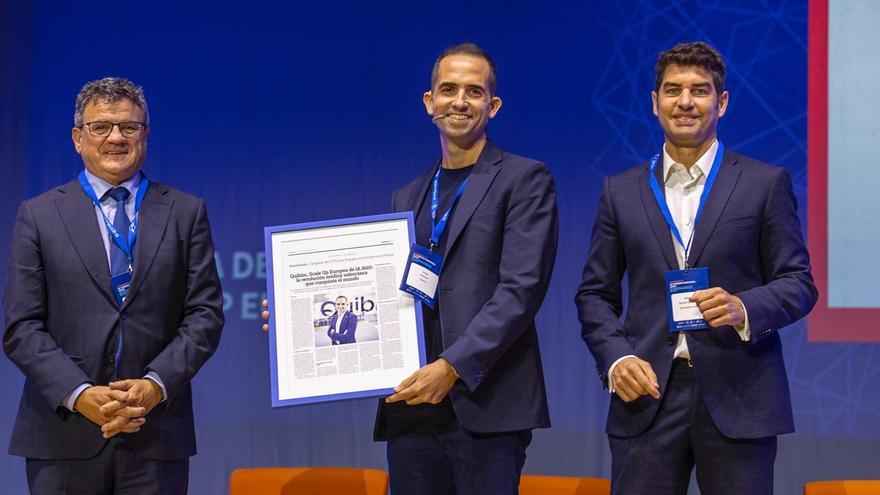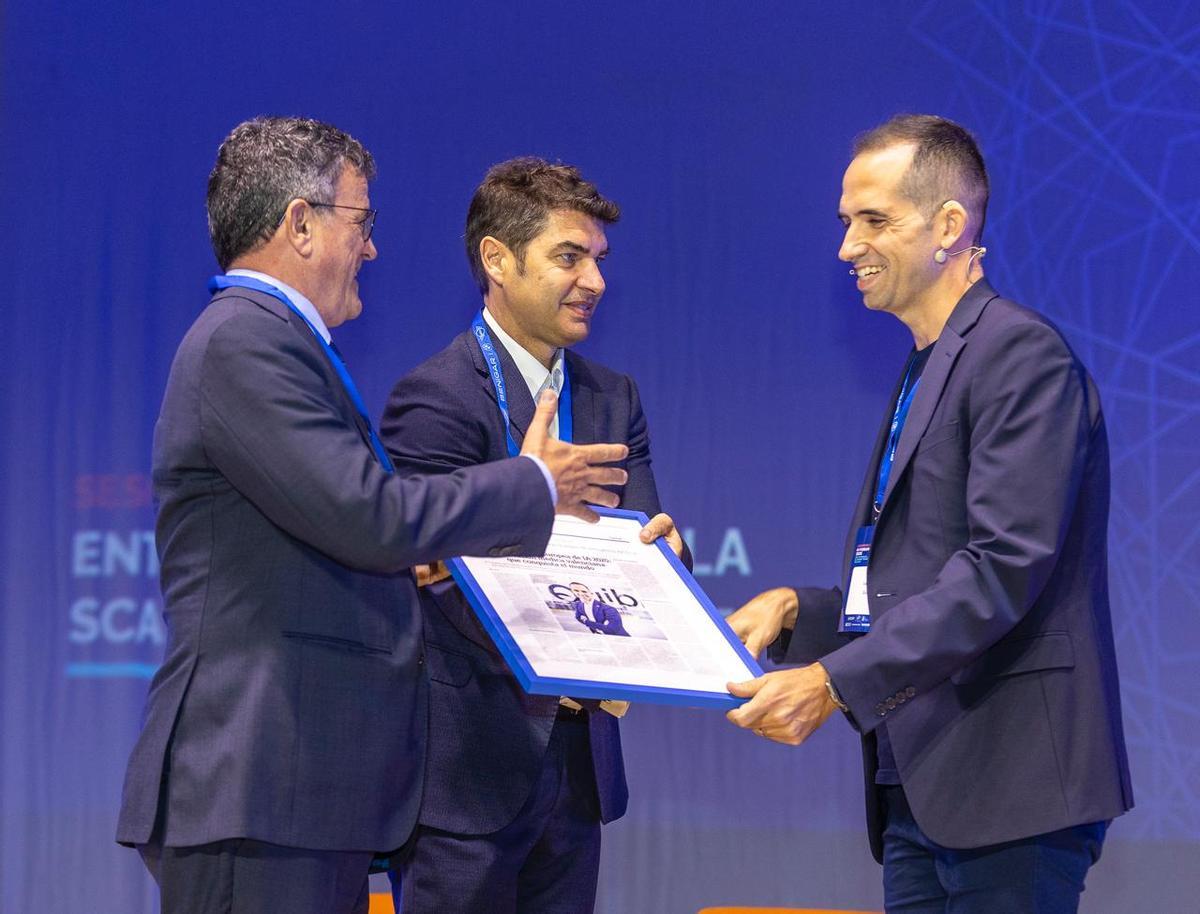
A recognition for an innovation thanks to the AI that saves lives. The company Quibim has been awarded the 2025 European Scale-up Award from the IV European Forum on Artificial Intelligence from Alicante. A recognition for its leadership in the development of AI solutions applied to medical imaging, which now allow detection before the prostate cancer, Alzheimer's and fatty liver. And in 2026 they will have tools for breast cancer. breast and lung.
The award was presented during the second day of the forum, which took place this Thursday at the ADDA. The founder and CEO of Quibim, Ángel Alberich Bayarrihas collected the award, from the hands of Manuel Bonillapresident of Encuentros Now and Corporate Director of Innovation SHA&AB Living Group, and Tony CabotINFORMATION director.

A moment from the intervention of the CEO of Quibim at the European Artificial Intelligence Forum in Alicante / Alex Domínguez
Alberich has stated that “for me it is a great pride and satisfaction to receive this award. I would like to thank Iberian Press -group to which INFORMACIÓN belongs- and also to the entire artificial intelligence ecosystem of Alicante”.
And he has explained what the revolution that represents the activity of your company and “why we are concerned about medical imaging, why we work with medical images and we apply artificial intelligence to them.”
If we analyze the images with artificial intelligence, we can not only see the disease. We can also see other findings that explain the lives of these patients.
Thus, the CEO of Quibim has highlighted that they have worked with images of people who were not diagnosed with any medical findings, that is, no pathology. “They were images labeled normal by the radiologists, but nevertheless all of them are pathological and we have diagnosed them thanks to artificial intelligence. But beyond detecting this disease, there are other aspects that the doctor's human eye misses.”
See beyond
And he explained that “we say that the image is the phenotypewhich is nothing more than genes. And if we analyze the images with artificial intelligence, we can not only see the disease. We can also see other findings that explain the lives of these patients. They explain to us, for example, that here we have a patient who has a good muscle in his spine and is telling us that he does sports. We have a patient who has a lot of subcutaneous fat, which means he is not eating well, he is not eating well. And artificial intelligence is able to capture all this information“.
We are creating products that analyze medical images of the human body and issue a diagnosis and also a prediction or prognosis
Alberich pointed out that “what we did is, instead of creating a company that provided artificial intelligence analysis services, we created a product company. We are creating products that analyze medical images of the human body and issue a diagnosis and also a prediction or prognosis.”
And he pointed out that “we consider artificial intelligence models as a assetinstead of considering it as software development that we could bill by the hour. We consider it an asset that has a intellectual property that we can develop in collaboration with the pharmaceutical industry or with large research institutes. And from here we carry out a development process in which we distill all that research until we manage to obtain the final products.”
The same language in all hospitals
But to be able to put this into practice, we must first make all the machines and all the hospitals speak the same image language, “because the image qualities are very different and we have created a generative AI that standardizes that image quality so that all images are comparable. We collect a lot of data beyond the image, the medical recordthe pathological anatomythe results of the biopsies and we use this both for train models“And thanks to AI it gives doctors a sensitivity that they would not have.
What we want is not only to detect the disease or diagnose it, but also to be able to predict or forecast what is going to happen in the future and for this to be useful for the entire population.
Of course, for this “we need technology, we need a lot of computing capacity. In the end what we want It is not only detecting the disease or diagnosing it, but also being able to predict or prognosticate what is going to happen in the future and that this serves the entire population.

award ceremony / Alex Domínguez
And thanks to all this work, you now have three products for the detection of prostate cancer, Alzheimer's and multiple sclerosisand for fatty liver. “And our next tools in 2026 will be in breast cancer and lung cancer“.
And he has indicated that the objective is “to move the image increasingly at earlier stages to be preventive“That is, why don't we think about doing imaging before the symptoms and not after. And this is an example of how we contribute to that digital twin We haven't figured it out yet. In the end, the digital twin is a great work of engineering that will require a lot of research, but without a doubt the medical image, how I am now inside, that data capture will be a fundamental part.”
Subscribe to continue reading
